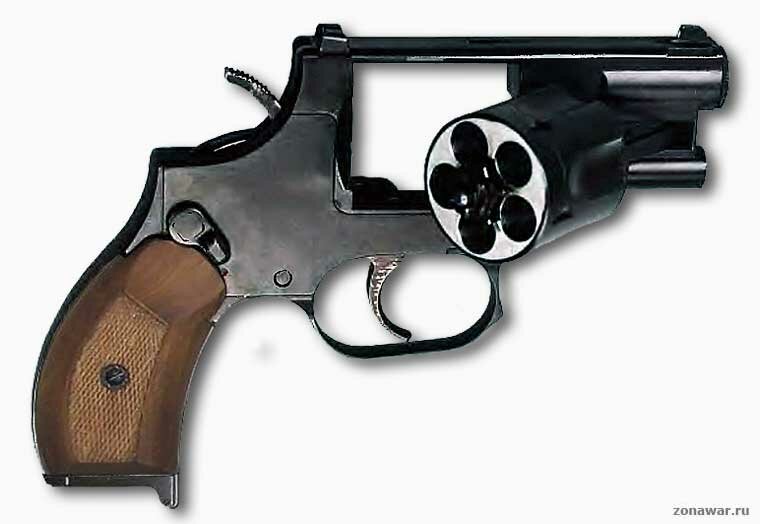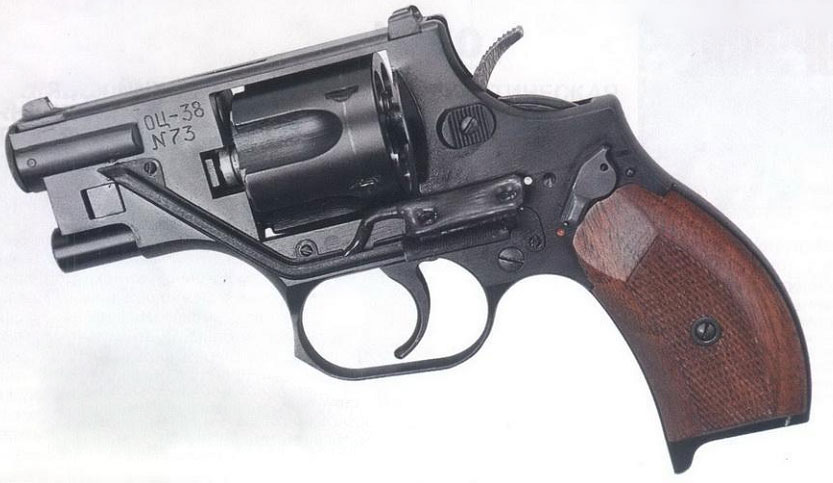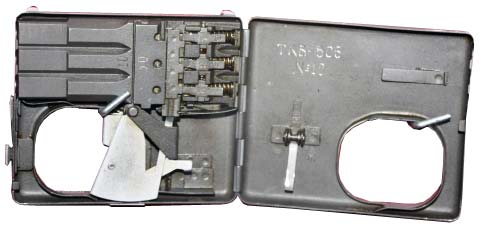I have a SilencerCo SS Sparrow. In my quest to have a variety of host pistols, I have pretty much all the autoloaders threaded now that make me happy. I have a blued 4.5" Ruger Single Six that I think would be fun to silence. I have read many comments that because of the barrel/cylinder gap, that trying to silence a revolver is a waste of time. My observation has been that when shooting a silenced autoloader, that just as much flame, and blast comes out of the ejection port, as comes out of the B/C gap of an unsilenced revolver. There doesnt seem to be much noise from the ejection port on the silenced autoloader. Why would the B/C gap of a revolver be any different?
You are using an out of date browser. It may not display this or other websites correctly.
You should upgrade or use an alternative browser.
You should upgrade or use an alternative browser.
Silencing a Revolver
- Thread starter weblance
- Start date
The gap on an autoloader opens AFTER the bullet leaves the barrel. The gap on a revolver is constantly open. Suppressing a standard revolver is not going to be very efficient.
You're better off buying a gas seal revolver like the M1895 Nagant which sell for around $200 and threading that barrel, if you want a suppressed revolver.
You're better off buying a gas seal revolver like the M1895 Nagant which sell for around $200 and threading that barrel, if you want a suppressed revolver.
g.willikers
New member
There was a device for silencing revolvers.
It completely encased the frame, cylinder and rear of the barrel.
In addition to the suppressor, of course.
It completely encased the frame, cylinder and rear of the barrel.
In addition to the suppressor, of course.
I'm not sure what you are shooting but that is not my experience at all. I get additional gas and some noise out of gas operated semi-auto rifles. I shot a suppresed Makarov a while back and it had lots of ejection port noise. A 10/22 shooting Aguilla SSS also gave me lots of pop probably due to the short shell case uncovering the chamber quicker than the usual sized 22lr.My observation has been that when shooting a silenced autoloader, that just as much flame, and blast comes out of the ejection port, as comes out of the B/C gap of an unsilenced revolver. There doesnt seem to be much noise from the ejection port on the silenced autoloader. Why would the B/C gap of a revolver be any different?
Keep in mind that a revolver is spewing gases out of the gap from the time the bullet enters the barrel until the gases finish escaping. This is much different than ejection port or gas operated action noise.
Last edited:
johnwilliamson062
Moderator
I would love to see some actual numbers on a test of a silenced revolver. I don't doubt it would not be as effective as an auto, but if the difference were as drastic as many make it out to be I don't think revolvers would work that well to begin with. What is the generally accepted functional min gap? .005? I have to believe a revolver with that gap would be much quieter AND sound much different than an unsuppressed gun. For most people shooting on the property, convincing the neighbors you are building a rabbit hutch with a nail gun instead of shooting is every bit as important as hearing protection.
I believe that a silencer on a revolver would be more effective than people are allowing credit. Lets' not forget that on AR's, gas escapes through the gas tube; on AK's, gas punches the piston; on steyr GB's (threaded barrel for silencer optional) the barrel was ported for the gas brake. It's not like any gu
The gap on most good revolvers is quite small. I'd bet that a silencer is still quite effective on revolvers.
The gap on most good revolvers is quite small. I'd bet that a silencer is still quite effective on revolvers.
Theohazard
New member
Keep in mind that on a DI AR-15 the gas is escaping out of the chamber area and is cool enough that it's not making much noise. But on an AK, the gas is escaping in front of the piston and is much hotter and louder, which is one of the reasons suppressing an AK sucks.
Theohazard
New member
Here's something I don't think anyone has pointed out: A suppressed revolver will have a lot more gas escaping from the cylinder/barrel gap then the same gun without the suppressor.johnwilliamson062 posted
I would love to see some actual numbers on a test of a silenced revolver. I don't doubt it would not be as effective as an auto, but if the difference were as drastic as many make it out to be I don't think revolvers would work that well to begin with. What is the generally accepted functional min gap? .005? I have to believe a revolver with that gap would be much quieter AND sound much different than an unsuppressed gun.
Suppressors produce back-pressure that sends hot, loud gasses back through the chamber. On a properly-tuned semi-auto, the breech is closed long enough for the bullet to get out of the barrel and the pressure to drop before the action opens up. But on a normal revolver, the gap is always open and adding a suppressor will allow even more hot gases to escape than without one.
I don't have any personal experience with suppressing revolvers, but from what I know about suppressors I would think that a suppressed revolver would be a little quieter than unsuppressed, but still significantly louder than a suppressed semi-auto and not at all hearing safe. After all, there's probably a reason that every suppressed revolver setup I've heard of attempts to close or block the cyclinder/barrel gap in some way.
So imagine this...Suppressors produce back-pressure
http://en.wikipedia.org/wiki/File:Magnum44_900pix.jpg
...with the added back pressure of a suppressor. It's not going to be very efficient and reducing the sound of the shot.
That's not to say that a suppressor on a revolver wont reduce the decibel level, it's just not going to be a large amount. And it's not going to be close to the reduction you get with a gas seal revolver.
http://www.youtube.com/watch?v=vvF4yurWSc0
Get a Nagant Revolver.
On the Nagant, the cylendar moves forward when the trigger is pulled/hammer pulled back. The round (7.65 Nagant) uses a bullet that actually rests below the lip of the brass (one of you reloaders can correct my terminology), creating a sealed chamber. AFAIK, it is the only revolver that can realistically use a silencer.
On the Nagant, the cylendar moves forward when the trigger is pulled/hammer pulled back. The round (7.65 Nagant) uses a bullet that actually rests below the lip of the brass (one of you reloaders can correct my terminology), creating a sealed chamber. AFAIK, it is the only revolver that can realistically use a silencer.
It's been done
Here's a youtube search of silenced nagant. Lots of results. I seem to recall a while back that in the 40's some german special warfare division made a custom silenced revolver as well.
http://www.youtube.com/results?search_query=silenced+nagant
Here's a youtube search of silenced nagant. Lots of results. I seem to recall a while back that in the 40's some german special warfare division made a custom silenced revolver as well.
http://www.youtube.com/results?search_query=silenced+nagant
The Russians also have the OTs-38 "Vorchun"/"Croaker", a revolver designed by Igor Stechkin (the same guy who designed the APS machine pistol); this uses 7.62 SP-4 internally-silenced ammunition with a sliding cup inside the case to stop gasses from escaping to the outside atmosphere, and will penetrate a helmet or CRISAT target from 15 metres. These fire from the bottom chamber in the cylinder, and usually have a laser sight built into a tube where the barrel would normally be.





The Russians also have the OTs-38 "Vorchun"/"Croaker", a revolver designed by Igor Stechkin (the same guy who designed the APS machine pistol); this uses 7.62 SP-4 internally-silenced ammunition with a sliding cup inside the case to stop gasses from escaping to the outside atmosphere, and will penetrate a helmet or CRISAT target from 15 metres. These fire from the bottom chamber in the cylinder, and usually have a laser sight built into a tube where the barrel would normally be.
Interesting. That looks like the wheelgun equivalent of the PSS, which I believe uses the same cartridge. It's a semi auto though. Very compact and quiet.
The PSS was developed to give Soviet special forces and secret police an almost completely silent option for covert operations such as reconnaissance and assassinations. The weapon uses a unique cartridge with an internal piston to achieve this end. Otherwise, it is a fairly simple double action pistol. Few details are known about the pistol's performance, as only a few have entered western hands.
The PSS uses a specially developed 7.62x42mm necked round SP-4 (СП-4).[1] The cartridge contains an internal piston and a propelling charge, with the stem of the piston against the base of the bullet. On firing, the piston delivers enough impulse to project the bullet from the barrel to an effective range of 25 meters. The piston then seals the cartridge neck, preventing noise, smoke, or blast from escaping the barrel.[2]
Theohazard
New member
I was just talking to a co-worker of mine who is both a long-time revolver enthusiast and a long-time suppressor enthusiast. While he agrees that a suppressed revolver will be a little bit quieter overall, he thinks it will actually be louder from the shooter's perspective.
He likened it to shooting with a muzzle break: Just as a muzzle break shoots gasses to the side and upwards making the gun sound louder to the shooter, a suppressed revolver would send even more hot, loud gas sideways out of the cylinder/barrel gap making it sound louder to the shooter than it does unsuppressed.
Now I really want to try this! I just need to find a cheap revolver to thread and then put my 9mm suppressor on it.
He likened it to shooting with a muzzle break: Just as a muzzle break shoots gasses to the side and upwards making the gun sound louder to the shooter, a suppressed revolver would send even more hot, loud gas sideways out of the cylinder/barrel gap making it sound louder to the shooter than it does unsuppressed.
Now I really want to try this! I just need to find a cheap revolver to thread and then put my 9mm suppressor on it.
Model12Win
Moderator
Really interesting wheelies!
Actually, the Russians had this "silent cartridge" technology a long time before the QSPR; in the mid-1950s, Stechkin had designed the TKB-506 and TKB-506A "cigarette-case guns", chambered for an earlier 7.62x35mm SP-2 cartridge, which looks like a stretched 7.62 Tokarev cartridge.




Mike Irwin
Staff
I believe it was Ruger that built a silenced revolver used the shroud that was previously mentioned. It was quite effective as a silenced weapon, but was quite a bit bulkier and a lot slower to reload.
A number of manufacturers have built silenced sem-autos with slide locks that prevent the slide from cycling, eliminating any possible residual pressure blast from the barrel and also eliminating the noise of the slide cycling and the casing being ejected.
A few days ago I found this illustration:
http://s124.photobucket.com/user/StaceyC123/media/001.jpg.html
It shows the silencer that was used on the Model 1895 Nagant Gas Seal Revolver.
A number of manufacturers have built silenced sem-autos with slide locks that prevent the slide from cycling, eliminating any possible residual pressure blast from the barrel and also eliminating the noise of the slide cycling and the casing being ejected.
A few days ago I found this illustration:
http://s124.photobucket.com/user/StaceyC123/media/001.jpg.html
It shows the silencer that was used on the Model 1895 Nagant Gas Seal Revolver.
Mike Irwin
Staff
Dang!
Just found this illustration showing another Nagant silencer...
http://www.google.com/imgres?imgurl...&hl=en&ei=_Zn2UZzwObS24APLloHYCQ&ved=0CAEQsCU
Just found this illustration showing another Nagant silencer...
http://www.google.com/imgres?imgurl...&hl=en&ei=_Zn2UZzwObS24APLloHYCQ&ved=0CAEQsCU
